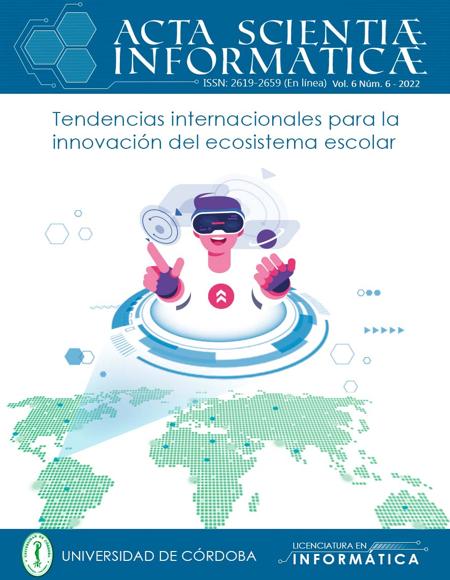Diseño y desarrollo de interfaces gráficas para el sistema diagnosticador de estilos de aprendizaje (SDEA)
Diseño y desarrollo de interfaces gráficas para el sistema diagnosticador de estilos de aprendizaje (SDEA)
Show authors biography
Throughout history, the educational system has had the purpose of improving the teaching- learning process in each of its axes, so that with the establishment of the existence of different ways of learning, it is important to identify in what way individuals learn and take this learning style into account when imparting
knowledge. From that perspective, the present research proposal has the general objective of developing the interfaces of the SDEA Learning Styles Diagnostic System through a qualitative approach methodology and case study as a method to be implemented in a way that allows obtaining results such as a better navigability experience for the user.
On the other hand, improving the SDEA system also qualifies the teaching-learning process since it is a technological tool that facilitates the identification of ways of learning by students.
Article visits 164 | PDF visits
Downloads
- Estrada García, A. (2018). Estilos de aprendizaje y rendimiento académico. Revista Boletín Redipe, 7(7), 218-228. Recuperado a partir de https://revista.redipe.org/index.php/1/article/vie w/536
- Castro, I., Salgado, C., Peralta, M., Sánchez, A., Fernández, M., Magaquian, J., & Fuentes, N. (2019) Experiencia de Usuario en Plataforma virtual de Aprendizaje. Universidad Nacional de Rioja, Colombia. Disponible en: http://sedici.unlp.edu.ar/bitstream/handle/10915/77104/Documento_completo.pdf- PDFA.pdf?sequence=1&isAllowed=
- Sampieri, H. (2016). Fernández y Baptista (2010). Metodología de la Investigación, 5.
- Cordero, Z. R. V. (2009). La investigación aplicada: una forma de conocer las realidades con evidencia científica. Revista educación, 33(1), 155-165.
- Ander, E. (2011). Aprender a investigar. Nociones básicas para la investigación social.
- Huddleston, R. (2017). Introduction to Adobe Experience Design. In Beginning Adobe Experience Design (pp. 7-21). Apress, Berkeley, CA.
- Vásquez Reyes, S. P., & Carmen Quipuzco, V. E. (2018). Metodología de referencia de UI, UX e IXD para el desarrollo de aplicaciones en smartphones y smartwatches.
- Antamba Villagómez, A. F. (2020). Desarrollo del sistema web para la gestión académica de la unidad educativa “Modesto A. Peñaherrera”. utilizando las herramientas VUE. JS Y Spring Framework (Bachelor's tesis).
- Wehrens, R., Putter, H., & Buydens, L. M. (2000). The bootstrap: a tutorial. Chemometrics and intelligent laboratory systems, 54(1), 35-52.
- Shershneu, M., & Oskin, A. (2020). Postman Platform for API Development in the Mobile Application" Musicians of Russia".
- Middleton, N., & Schneeman, R. (2013). Heroku: up and running: effortless application deployment and scaling. " O'Reilly Media, Inc.".


